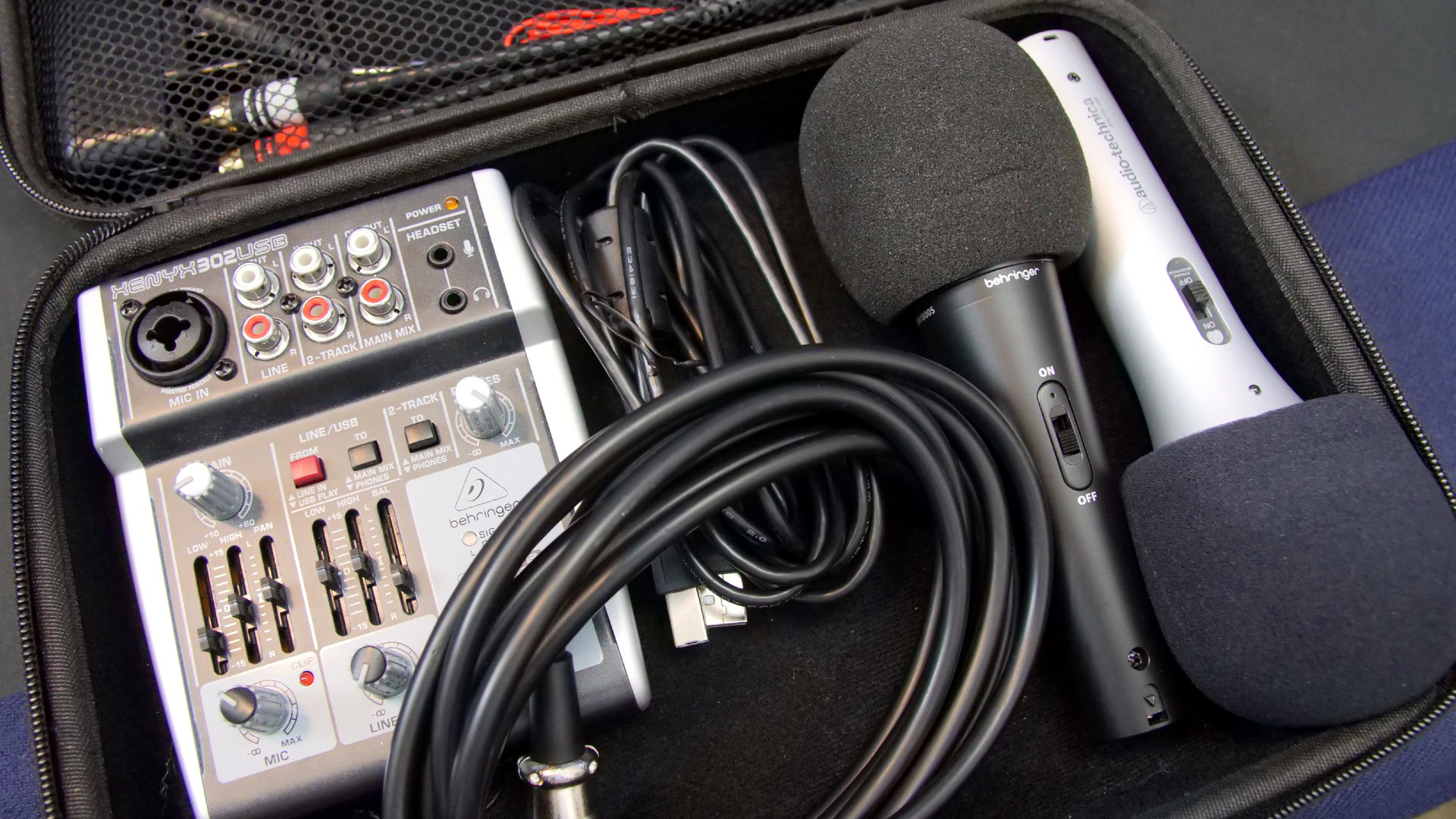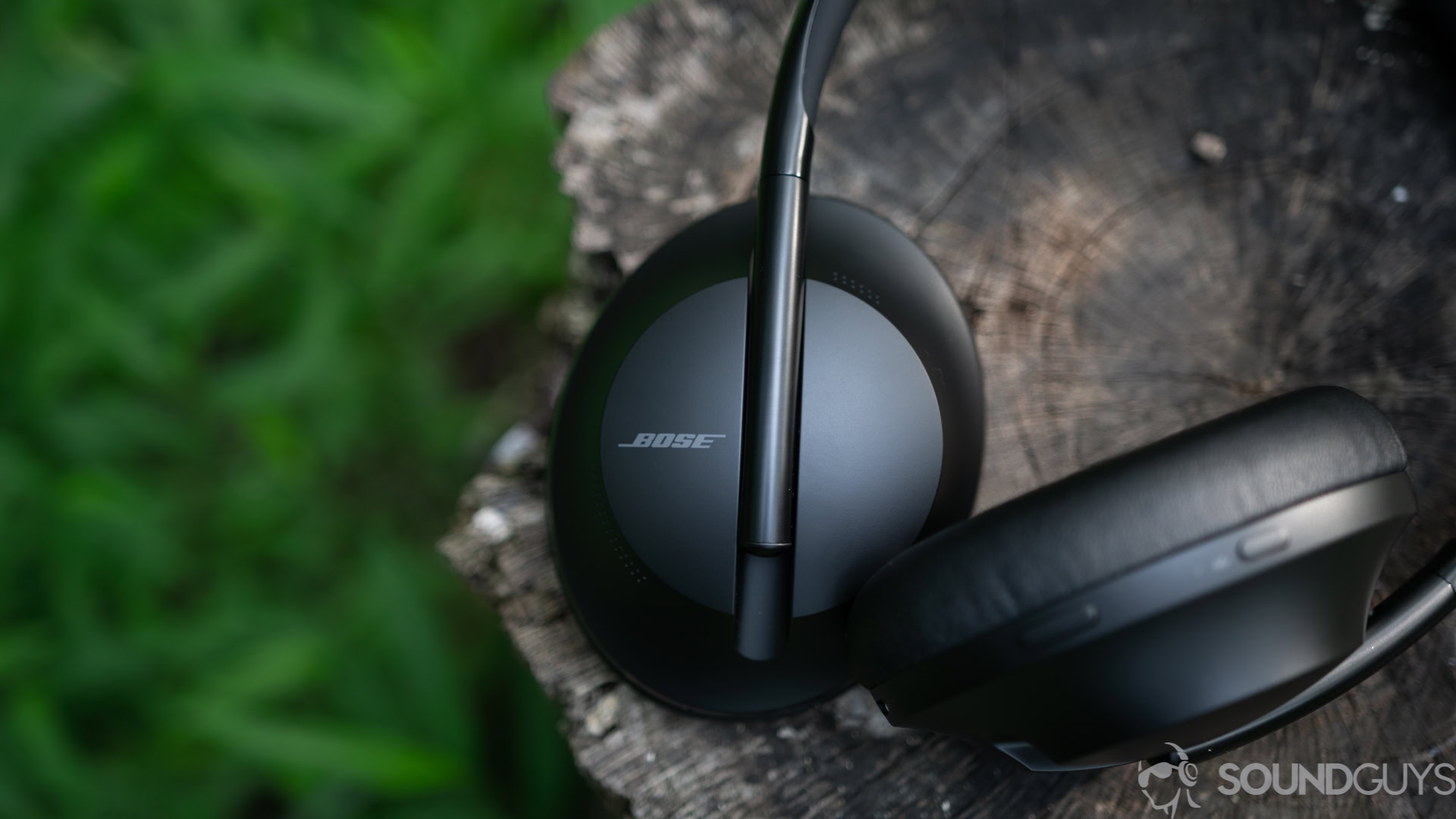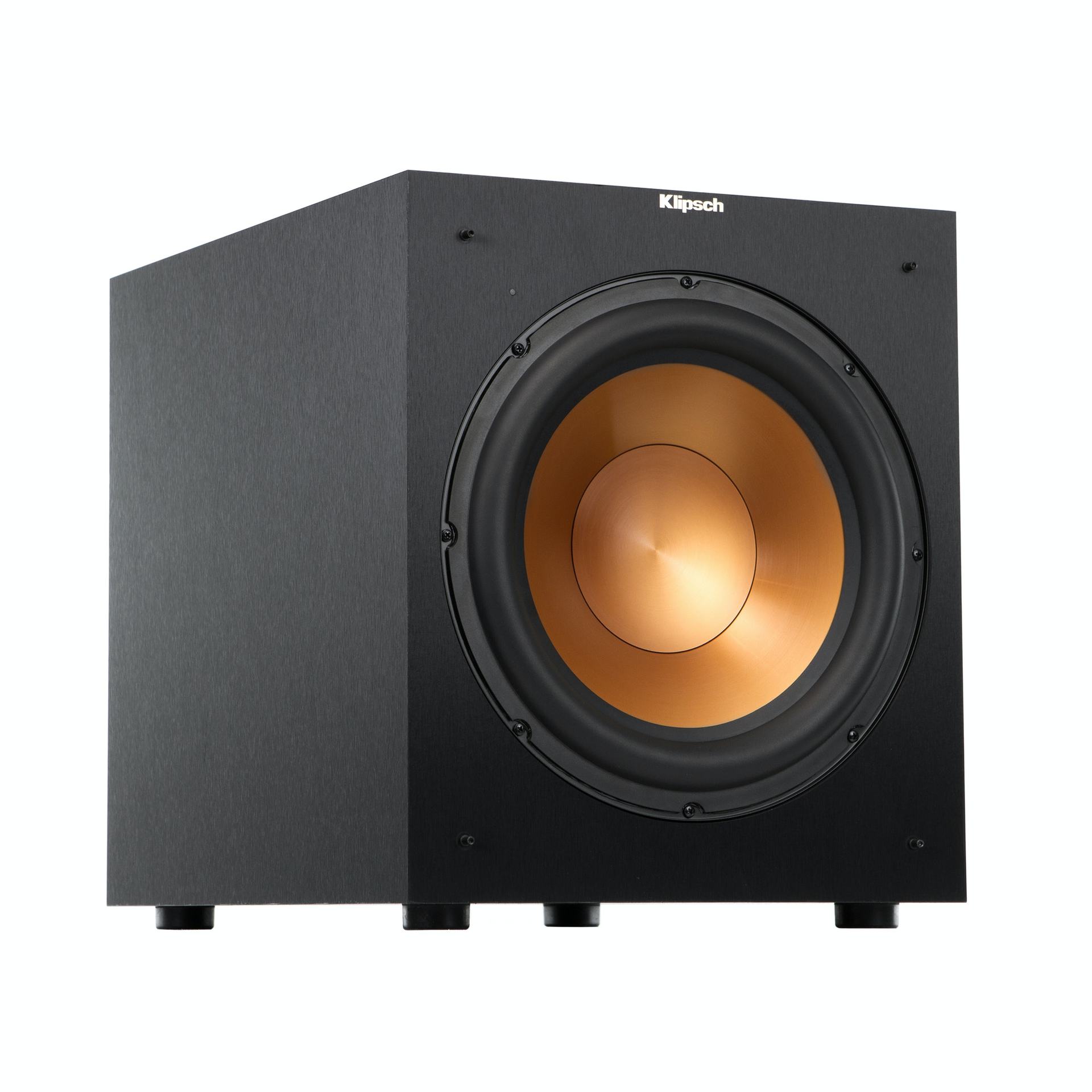Affiliate links on Android Authority may earn us a commission. Learn more.
Audio terms explained: Crunchy? Warm? Punchy?
Published onFebruary 2, 2023

Update: February 2, 2023: We amended technical wording and section headers to improve clarity.
Original article: August 8, 2022: Our sister site SoundGuys has all sorts of objective ways to talk about audio, and when we feature its headphones reviews, we appreciate that. But if you head to other corners of the web, you’ll find many terms used to describe audio: “warm,” “crisp,” “punchy,” “sharp,” “dull,” and more. What do these terms even mean, though? Is there some standard, or are they being used on an ad-hoc basis?
Here’s a spoiler: among enthusiasts, audio terms usually don’t have a standard, but there are standardized ways to talk about audio.
Crunchy, crisp, warm: Why do we talk about audio terms like food?

One thing you might notice as a sort-of trend when it comes to terms used to describe sound is how they are metaphorical. Often, people use words such as “punchy” or “booming” to describe a product’s frequency response. That’s fair enough because it is difficult to describe sound in other ways at first. How would you summarize the phrase “the bass is twice as loud as the mids and occasionally drowns out the highs”?
But as you’ve likely already realized, these terms are floating signifiers. That is, they don’t carry meaning outside of what gets read into them. It can be challenging for newcomers to grasp terms like “restrained, yet rich” bass. To add to the confusion, those writing these lines often aren’t consistent in how they use them, either.
The problem with talking about audio and food, however, is that both can be quite subjective experiences.
What is “too salty” to one person is “bland” to another. What is “impressive” bass to one listener is “flat” to another.
Unlike food, however, there’s even less agreement in the audio terms world. If you describe a dish as “spicy,” you can assume that it likely has a high concentration of capsaicin, at least to the writer. But that’s still a subjective judgment. What’s spicy to a Briton likely would be mild to a Punjabi. Still, we tend to know that spicy indicates this. Sound terms have even less benefit in this regard.
Common audio terms and what they might mean

Even if the terms you see flying around don’t inherently mean much, we can attempt to pick apart what they might mean in a few contexts. Keep in mind that we can’t speak with every author in mind, nor can we assume consistent usage of these terms elsewhere.
What does crunchy audio sound like?
This term could have any number of meanings, but it is almost always negative. “Crunchy” sound often refers to poor reproduction and reproduction of instruments. When audio is “crunchy,” it can be difficult to tell a guitar apart from a harp and even a drum. It could sound as if everything is “crunched” together.
Crunchy may also mean the drivers are loose or broken, leading to “crackling” or “rattling” sounds in a pair of headphones or a speaker.
What does warm mean when discussing how headphones sound?
“Warm” is usually a positive term. It tends to mean that an audio product produces pleasing amounts of bass — but not too much! Warmth also implies that vocals are clear, if present, and that the mids remain audible. What usually distinguishes it from “balanced” is the presence of stronger bass than you’d find in a product called “balanced,” with highs that, while present, are less loud than the mids and lows. By extension, warmth tends to associate with clearly reproduced instrumentation.
In audiophile circles, warmth is associated with tube amplifiers and analog, versus digital, sound circuitry. However, there’s another debate about whether casual listeners can perceive any effect.
What makes music sound lush?
The term “lush” is usually a positive descriptor used for audio products that are “warm” and generally pleasant to hear. This is a slippery term. You may often see it in phrases such as “lush strings,” used to indicate both accurate instrument reproduction and an enjoyable frequency response.
How do you describe something that sounds muddy?

The term “muddy” ends up being an umbrella term for many kinds of “bad” audio. Muddy sound is usually used to describe products that don’t reproduce instruments clearly, have way too much bass, and make it difficult to pick out vocals. While it is hard to state the exact reason a writer might describe any one product as muddy, we feel safe saying it’s a negative term and generally indicates poor-quality sound reproduction.
What kind of sounds make music sparkle and shimmer?
These are terms you’ll find concerning high-frequency sound reproduction. Overall these are positive and tend to mean sound with loud high notes that aren’t too harsh or piercing. Often, writers may call cymbals or small bells “shimmery” or “sparklingly clear.” Some listeners, however, may not enjoy such loud and prominent high notes.
Is there a difference between clean, clear, and transparent audio?
These terms tend to describe audio that has instruments easily distinguishable from one another without anything sounding too loud or too quiet. It does not necessarily indicate a studio headphones-type frequency response, though. Sound can be “transparent” or “clear” and still have boosted bass if you can still hear loud strings and bells, for instance. “Clean” audio is usually the opposite of “muddy.”
Is boomy the same as bass-heavy?
“Boomy” bass is bass that’s too loud in a bad way, most often. It “booms” louder than other sounds and drowns out other frequencies.
Is thumpy sound a good thing?
Often denoted as what a subwoofer feels like, “thumpy” bass is used as a positive to indicate you can “feel” the bass notes in your body. It may also be a negative because too much bass emphasis can make it hard to hear higher-pitched frequencies. Generally, thumpy bass means a pleasing amount of bass output without being too overwhelming.
What do detailed and analytical mean when describing sound?
“Detailed” or “analytical” sound tends to mean no frequency range overpowers another so that you can hear all of them roughly equally. You might see this term come up when describing audio products for studio settings, where you’d want to hear every frequency you can. Similar to “clear,” it doesn’t necessarily beget a studio-like frequency response. Amped-up bass can still permit you to hear other frequencies if done properly.
What does it mean if mids are recessed, restrained, or hollow?
We’re lumping these together because they tend to describe similar effects, though often at different points in the audible spectrum. Sound that is “hollow” or “recessed” has mids that are too quiet. This may also be called “v-shaped,” because the frequency response chart will appear as if a big valley is present in the mids. This can make the bass and treble sound louder, but it makes vocals and other midrange frequencies harder to hear. Sometimes headphones do this because it sounds decent if you’re just trying a pair before purchase, and you may not notice the problems until a little later.
Muddy sound is usually used to describe products that don't reproduce instruments clearly, have way too much bass, and make it difficult to pick out vocals.
Restrained can imply the same thing, but it may be more value-neutral. “Restrained bass” could be a compliment indicating the bass was expected to drown out other sounds but ended up not doing so.
When something is too loud, does that make it harsh, grating, or piercing?
Almost always indicators of problems, these terms tend to describe the high-frequency reproduction of an audio product. If the highs are too loud, it may sound like a smoke alarm or car anti-theft warning. A “grating” sound may also imply an extended or chronic problem — it makes you “grit your teeth and bear it” — while “piercing” may indicate shorter durations of the same. “Harsh” tends to be a general audio descriptor of too much treble.
What does dull, flat audio sound like?
“Dull” and “flat” might be used to describe a lack of treble notes, or they may be terms for generally “bad” audio. Its counterpoints are usually “exciting” or “fun.”
Flat might be a positive if you’re looking for studio headphones because a “flat” frequency response curve doesn’t emphasize any part of the audible spectrum too much.
What do dry, thin, liquid, and smooth mean?
“Thin” audio is usually audio that has quiet bass and sub-bass, as is “dry” audio. Liquid sound usually has audible bass, but it may be a touch too loud to hear midrange and treble instrumentation clearly like you would with something that sounds “detailed” or “analytic.”
Smooth is similar, but may also indicate no odd peaks in the frequency response curve of a product.
Does peaky audio mean music sounds too loud?
“Peaky” audio, as the name implies, tends to be used for products with frequency response curves with peaks or valleys in odd places. These can create a jarring listening experience with unexpectedly loud or quiet notes when slightly higher or lower frequencies aren’t reproduced in such a manner. Of all the casual audio terms, this one tends to be the most consistent.
What makes music sound fun or energetic?
When used to refer to dynamic range, or the difference between the loudest and most quiet parts, “energetic” implies a broad range. However, “fun” and “exciting” are far more subjective. They mean, for example, emphasized bass output, the ability of a speaker to get very loud overall, or even a particular case design.
Audio terms with actual meanings

Lucky for writers, readers, newbies, and seasoned professionals, there is a list of words used to describe sounds we can explain to you. Some of them are indeed familiar, like “punchy” or “clear” and even “boomy” as we saw above. Others may not be, but all have far more concrete definitions.
These terms come from Methods for selecting and describing attributes and terms, in the preparation of subjective tests by the International Telecommunication Union (ITU), as defined in standard ITU-R BS.2399-0. Inside this document, you’ll find many familiar audio terms with solid definitions and some you may have never seen before. The difference is that, because this is a technical standard, all of the terms get real definitions, and we can use them consistently.
Let’s look at some of these ITU definitions to see how writers can use them to describe sound, and how they may or may not overlap with other common meanings.
What is the standardized audio definition of punch?
The ITU defines punch as “whether the strokes on drums and bass are reproduced with clout, almost as if you can feel the blow. The ability to effortlessly handle large volume excursions without compression (compression is heard as level variations that are smaller than one would expect from the perceived original sound).” Fair enough, but what does that signify when you’re listening to something?
First, let’s start with “compression” (also defined by the ITU) — not to be confused with audio file format compression. Audio that is “compressed” means it doesn’t have a wide dynamic range. That is, the difference between quiet and loud portions is narrow. Thus, “punchy” bass has an ample difference between quiet and loud drums, for instance. “Clout” means a heavy blow or impact. Adding that gives us bass that sounds like a drummer has made heavy, hard hits from sticks onto drums in a song.
All of these ITU standard terms get real definitions, and we can use them consistently.
A product with “punch” can handle large volume outputs without extra dynamic compression. The audio output does not all occur at one volume, and it does not blend various bass-producing instruments into a mass. In popular parlance, however, punch often has a broader definition. In this usage, it means bass that is forceful and quick.
What are the standardized audio definitions of dark and bright?
Dark audio has too much bass or not enough treble, and bright audio has too much treble or not enough bass. This is how the ITU defines them, and in general, it seems most of the time, other writers use these terms in this way. However, “bright” is also used by other publications as a compliment, so unless you’re sure a given writer is following ITU standards, this may vary.
What is the standardized audio definition of attack?
This term pops up a lot in audio writing. The ITU states that is the “Transient response. Specifies whether the drum beats and percussion, etc. are accurate and clear i.e. if you can hear the actual strokes from drumstick, the plucking of the strings etc. It is also expressed as the ability to reproduce each audio source transients cleanly and separated from the rest of the sound image.”
What that means is, for example, if you can clearly hear someone plucking away at a harp, the attack is precise. If you can’t, then it’s imprecise. If you cannot tell, because these sorts of sounds are hard to distinguish from other types of sounds, the attack is also imprecise.
Attack has another meaning which explains its widespread usage. In this sense, it means “where a sound begins in a recording.” So the “attack” of a given cymbal would be where you can first hear it in a track when it’s hit as it builds up to its full volume.
What is the standardized audio definition of boomy?
We saw this one before, but to the ITU, it specifically indicates bass that reverberates “as sound in a large barrel.” By “reverberates,” the ITU means the bass persists for too long and keeps going even after the instrument producing it is no longer being played. This is similar to the casual use of the term and indicates too much bass.
What is the standardized audio definition of dry?
Dry has a specific meaning to the ITU, where it indicates a space that does not have much reverberation. These are usually “small furnished spaces such as living rooms or spaces outdoor without reflecting objects.” Unlike its colloquial meaning, the opposite to dry in the ITU specifications is not “liquid.”
What is the standardized audio definition of tinny?
The term “tinny” is another popular option, and the ITU specification describes it as something with too much high-frequency or high-frequency response with too much resonance. You can think of it as the upper note version of “boomy.”
Also read: What is lossless audio?
So what do we do with audio terms now?
Even from the examples above, it’s clear that though actual hard definitions exist for some audio terms, that doesn’t mean people use the terms in that way. Furthermore, ITU’s terms may or may not overlap with common usage.
When we write audio reviews, we tend to avoid most non-ITU terms as much as possible. Often, it’s better to indicate what frequencies sound louder than others. Saying, “the bass is about twice as loud as the mids,” is much more concrete and explanatory than trying to find a metaphorical descriptor.
However, we cannot vouch for the style guide of every publication out there. Still, we hope this guide helped you, at least when reading other audio reviews.
